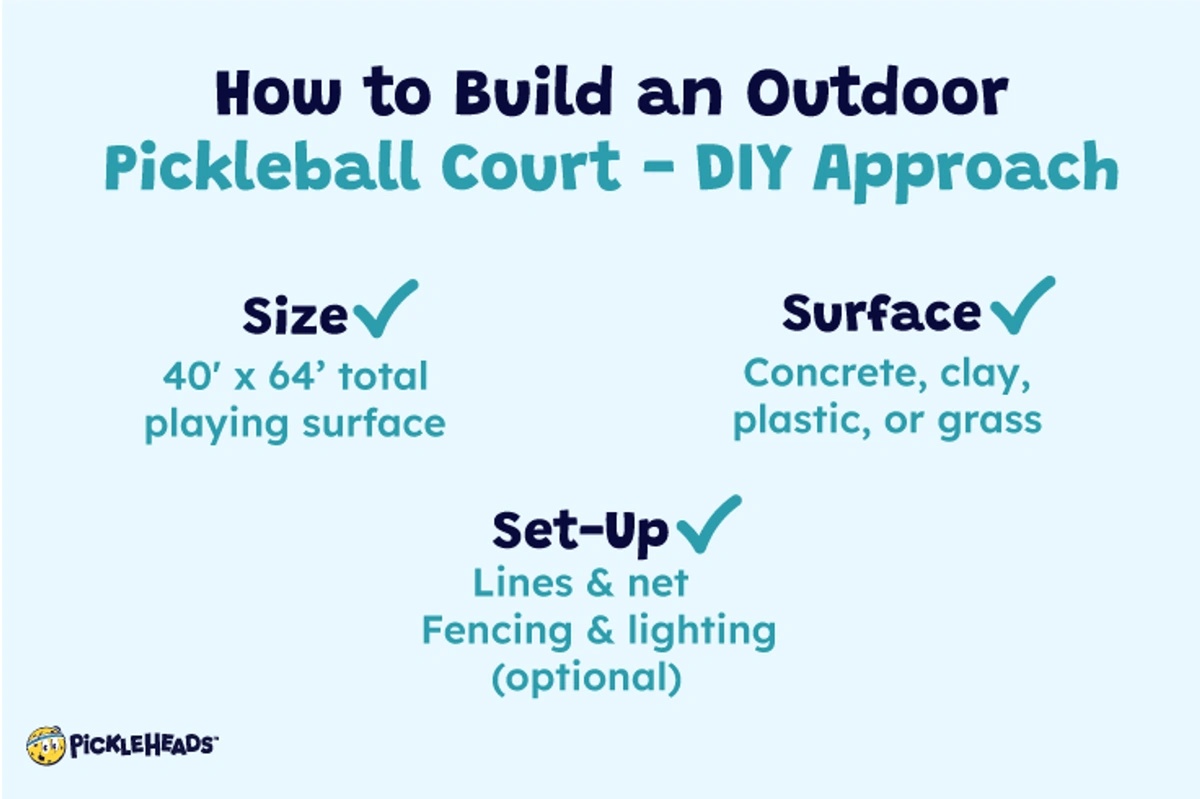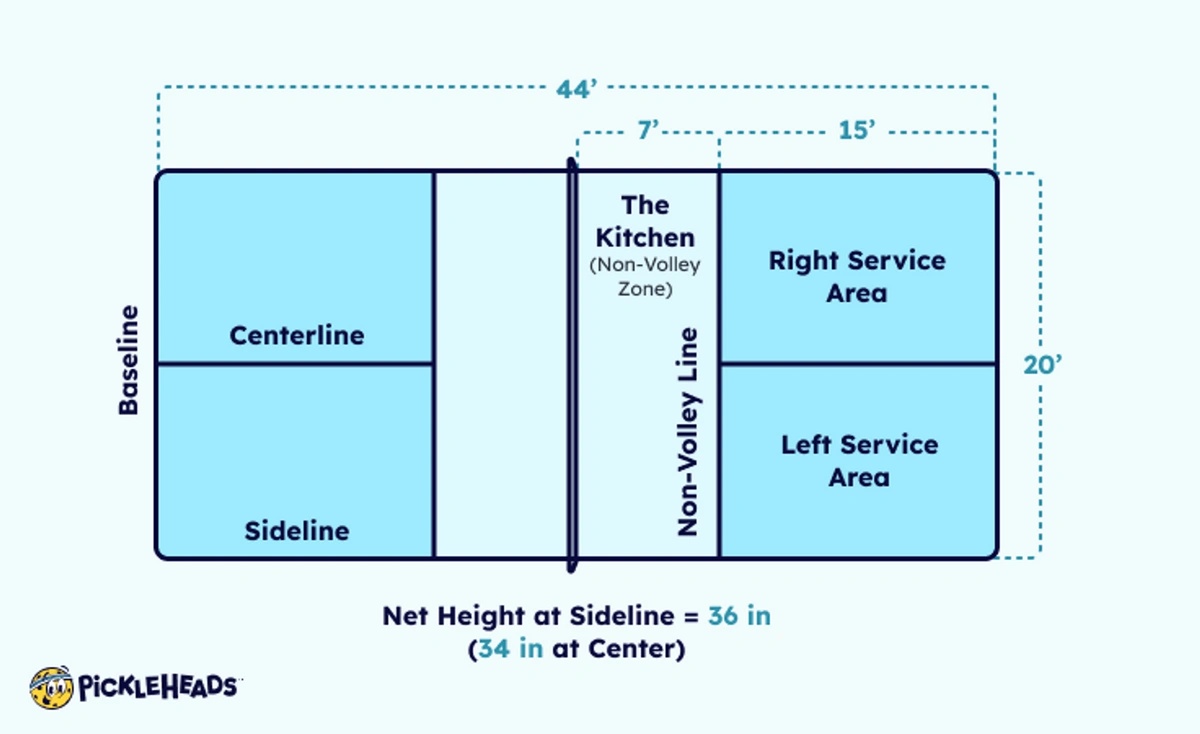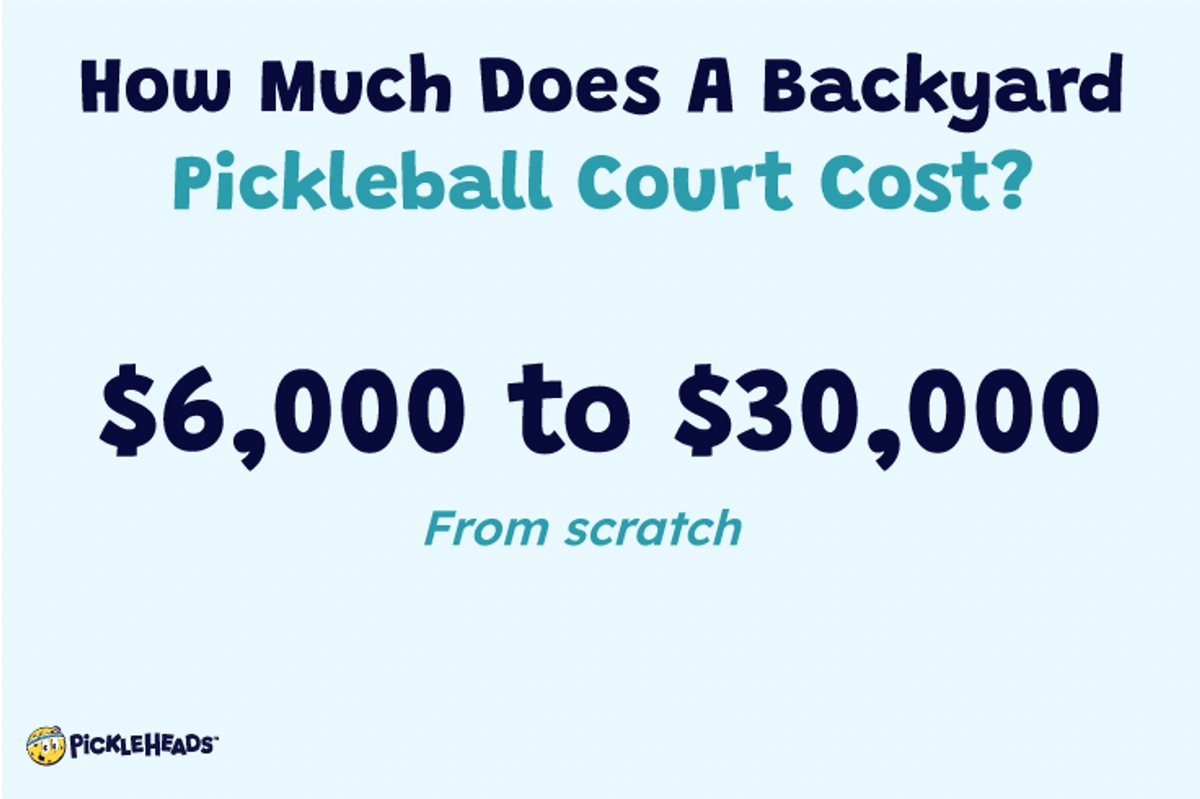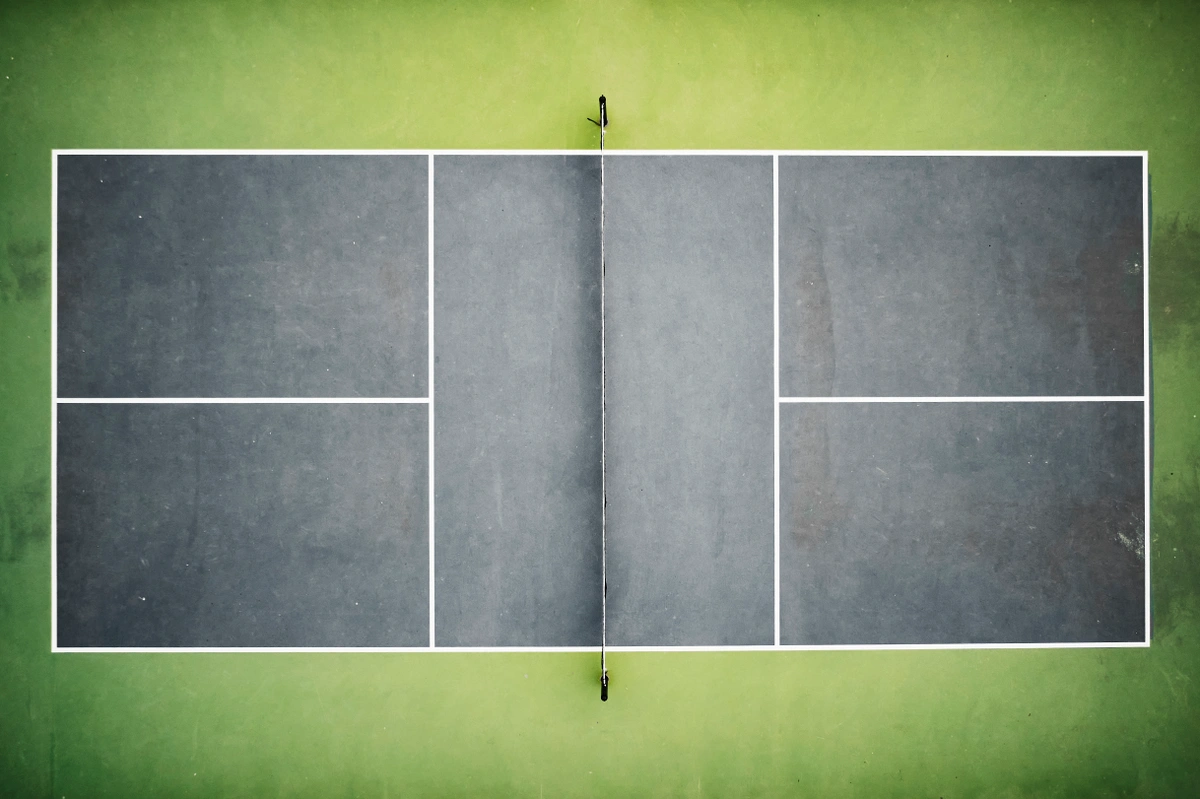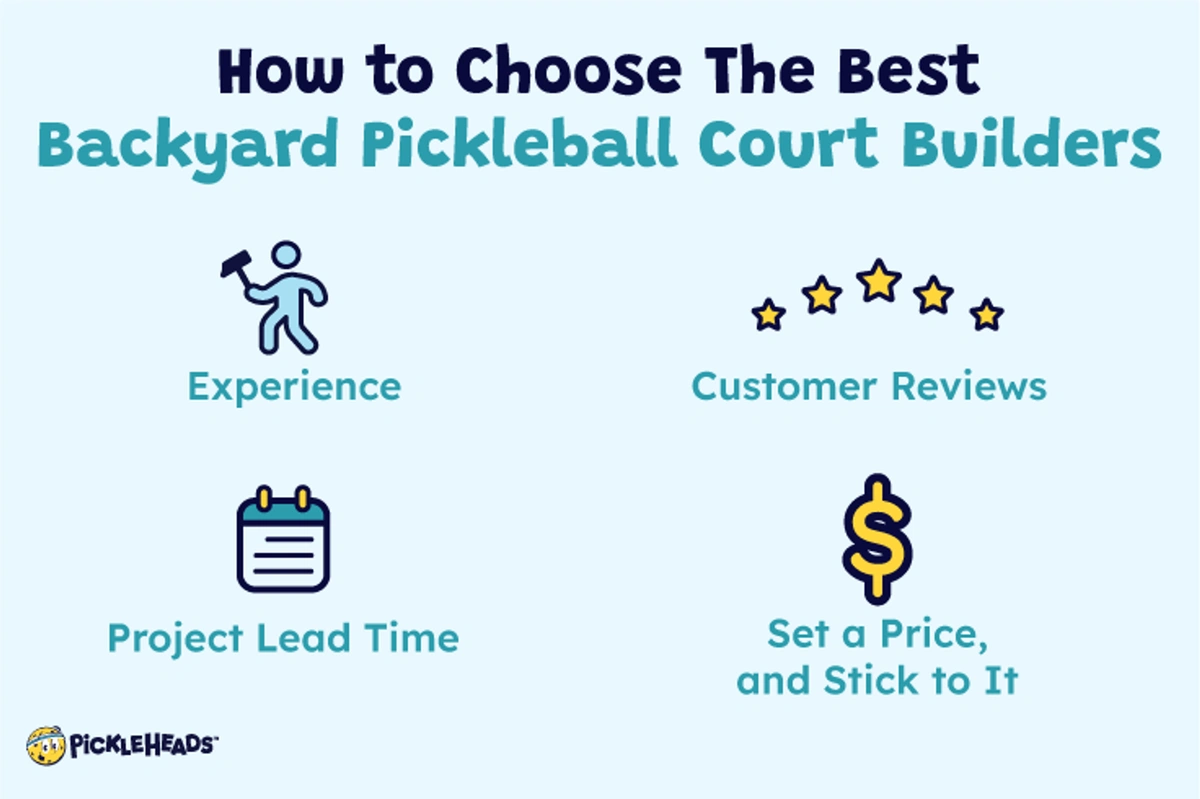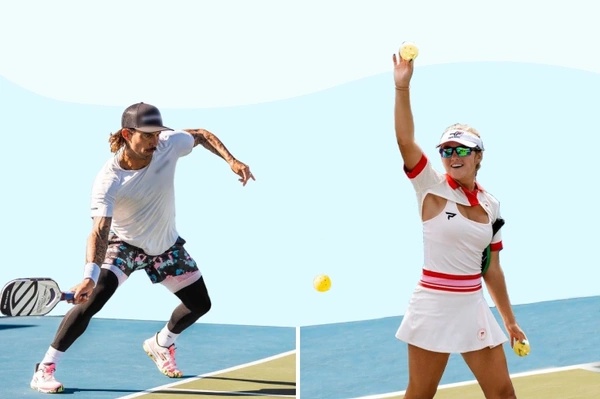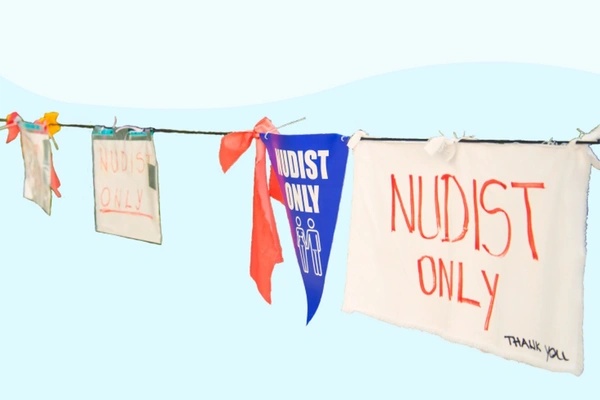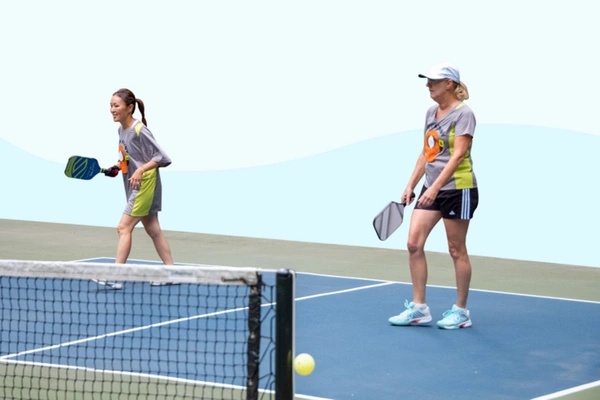
Quick Links
With the explosion of pickleball popularity across the world, new pickleball courts are opening up everywhere.
But in many areas, supply can’t keep up with demand. There are either too few courts available, or too many eager pickleheads that want to play!
What’s the ultimate dream of any dedicated pickleball player? To have a court in their own backyard, of course!
Well we’re here to tell you that this dream can be made a reality. There are a ton of specialist pickleball court builders out there, and you can even make one yourself. Yes, you read that right…
Imagine being able to step out onto your very own pickleball court whenever you like. No waiting time, no commute, and no need to even get dressed!
Then imagine being able to step into your own kitchen for a cool beverage and a sandwich between games. Sounds exciting, no?
Let’s now explore everything you need to know to get your own backyard pickleball court and be the envy of your pickleballer friends.
How to Build an Outdoor Pickleball Court - DIY Approach
Size
First up, let’s have a look at the practical side of building a backyard pickleball court. Clearly, the first thing you’re going to need is the space to put it.
Backyard pickleball court dimensions come in at 20' by 44' feet. Plus, you’ll need some space around it, so that you don’t fall off the edge when lunging for that sideline shot!
The USAPA rulebook states that players should consider the minimum pickleball total play area to be 30' by 60' (9.14m by 18.29m), but that a 10-foot surrounding margin is ideal. That would make the preferred total playing surface dimensions 40' x 64' (12.9m x 19.51m).
Ideally, your court will run from north to south, to optimize the direction of the sun. This way, the sun will be coming side-on, rather than in the eyes of the players. Depending on the layout of your yard, this may not be a problem. For example, if you have a line of tall trees that give shade to the court anyway.
Surface
Your backyard pickleball court surface can be concrete, clay, plastic or even grass.
Concrete is the favored option because it’s low maintenance and provides an even, regular playing surface and bounce. Ideally, your concrete surface will be covered with an acrylic court surface system. More on that later.
If you're planning to play on grass, make sure it's kept short and packed down as possible.
Clay is becoming a more popular surface for pickleball courts these days. Many players find it more forgiving on the knees and feet. A 2007 study in the British Journal of Sports Medicine found that the ‘mean force’ on the foot and legs was reduced for tennis players on a clay surface.
Finally, there is an option of laying a snap-together plastic surface, designed specifically for the job. This is an excellent option if your yard, lawn or driveway is flat but a bit worn, with an uneven or broken surface. This option also provides a more cushioned surface than plain concrete or asphalt.
If you’re lucky enough to already have a backyard badminton, basketball or tennis court then you’re halfway there already. You’ll only need to change the line markings and net and get playing! Which brings us onto the next section…
Set-Up
So, you’ve identified the space in your yard and worked out the best orientation for your pickleball court.
You’ve settled on your playing surface, measured your backyard pickleball court dimensions and calculated distance from your fridge to the baseline.
The next thing to consider is the court set-up, which is the court lines marking out your playing area and the pickleball net to play over.
A pickleball court has four service areas (two each side of the net) and two kitchens (one each side). These are marked and divided by the centrelines, sidelines, baselines and non-volley lines.
The lines on the court should be white and 2-inch wide. On a solid surface they, you can even paint them. You can also use tape, which also works for grass courts.
In the middle of the court is the all-important pickleball net. As per pickleball regulations, this must be 22-feet wide, with a height of 36-inches at the posts and 34-inches in the middle.
That 2-inch difference means that hitting the ball over the middle of the net is a little easier. And it allows for a lower shot trajectory.
The post that you hang your net between can be bought as part of a pickleball net package or independently. They can be set in the ground, attached with fixings or be totally freestanding.
A couple of final things to consider are fencing and lighting. A fence is great for keeping those stray balls close, which saves you a lot of leg work. It’s also crucial if you plan to build more than one court side by side.
If you plan to play in the evenings, as many people do, then consider adding a couple of good quality spotlights. Ideally, you should mount them a couple of feet back from the court, on 18 foot poles.
How Much Does A Backyard Pickleball Court Cost?
Next, let’s move on to another very important topic - backyard pickleball court costs.
As with any construction project, the cost of building your own court can vary hugely depending on what exactly you choose and where you’re starting out from.
If, for example, you already have a floodlit tennis court on your property, then adapting it to make it suitable for pickleball shouldn’t cost more than a couple of hundred bucks. Keep in mind that extra add-ons, like floodlights and fencing, may significantly increase your bill.
For the purposes of this price estimation, we’ll assume you don’t already have a playing surface, and that you are getting contractors to do the work, as we’ll discuss later. So, with that in mind a backyard pickleball court from scratch, will cost somewhere from $6,000 to $30,000.
That price will include ground work to level and prepare a flat area. Depending on the type of ground and whether it’s currently sloping, this can be an expensive part of the build. It’ll require some pretty heavy machinery, which will mean you’ll need access, and the ground may also need drainage and/or retaining walls.
Next will come the construction of a subsurface or foundation, which will generally be a thick slab of concrete. The concrete may be reinforced with rebar or not, depending on what the contractor deems necessary. This slab may cost as much as $5000-6000 on its own. And, it’ll be one of the most expensive parts of your backyard pickleball court.
Once your slab is down, it’s time to paint it or cover it with a court tile snap-together system. If you're painting it, there are specially designed coatings on the market which create a durable, grippy playing surface. They even supply some clever cushioning for your tired legs.
Now all that’s left to do is set up a net, fill up the cooler and invite your friends around for all-you-can-play pickleball parties!
How to Build an Outdoor Pickleball Court - Hiring Contractors
So, as we discussed, a DIY backyard pickleball court build is definitely possible. It all depends on your starting point and your level of construction knowledge.
There is quite a lot of work involved, which is why a lot of people leave the work to the professionals, and keep their energy for their pickleball serves. Unless you’re a construction professional, doing the earthwork and laying a flat slab will be outside your reach.
If you already have a good playing surface like a concrete yard or suitable grass lawn, then you can easily do it yourself. But if not, we definitely recommend hiring a contractor.
There are specialist sports court builders all over the country. Some of them build all types of courts, while others who specialize solely in pickleball.
If you’re in California, try pickleballbuilders.com, or sportcourtnortherncalifornia.com. If you’re in New York, try Sport Pros USA.
Remember, of course, that using a specialized builder is going to come with a bigger price tag. But you can relax knowing you’ll end up with a professionally built pickleball court in your own yard!
How to Choose The Best Backyard Pickleball Court Builders
If you’re going to be shelling out a considerable amount of money for a pickleball court, you want to make sure the finished product is perfect. So, here are a few factors to keep in mind when choosing a backyard pickleball court builder.
Experience
First and foremost, has your contractor got experience in the field? They may have done landscaping or built houses. But have they built sports courts before?
It really doesn’t matter whether they’ve built basketball, tennis, badminton or pickleball courts in the past. The important thing is whether they have a proven track record.
Ask for photos of previous projects, or even better, ask them if they have built any courts locally that you can go and see in person.
Customer Reviews
Find out what previous clients say about a contractor’s work. This is a great indication of their reliability and workmanship. If they’re a local company, ask around your friends and neighbors. Otherwise, try looking them up on review sites like Angie’s List or Trustpilot.
Project Lead Time
Before you sign anything with a contractor, make sure you’ve established a firm completion date. There may be a few days ‘wiggle room’, which is fine. But don’t accept a vague timescale.
‘Scope creep’ is where a project starts to run over the defined time, with new factors being uncovered or introduced after the deal is done. This is bad news for you as the customer.
Your yard is a mess for longer, costs go up, and most importantly, you have to sit looking out at the building site rather than playing pickleball.
Set a Price, and Stick to It
Last, but certainly not least, choose a contractor who will complete your backyard pickleball court within your budget. Speak to the contractor in an initial meeting and get a quote. If the price is right for your budget, then sign the paperwork. Make sure that all costs are specified.
Nobody likes that sinking feeling when you open a bill at the end of a job and realize that you can’t afford to pay it.
Pickleball is supposed to be fun, there’s no need to break the bank!
It’s Game Time!
So, there we have it folks, our comprehensive exploration of how to build a backyard pickleball court is nearing completion. The concrete has set and cured, the surface has been laid, the lines have been painted and the net is up.
All that’s left is to invite friends over, break out your favorite pickleball paddle and you’re ready to get playing!
If you have any further questions, please reach out to us on our socials, we’d be happy to help.
